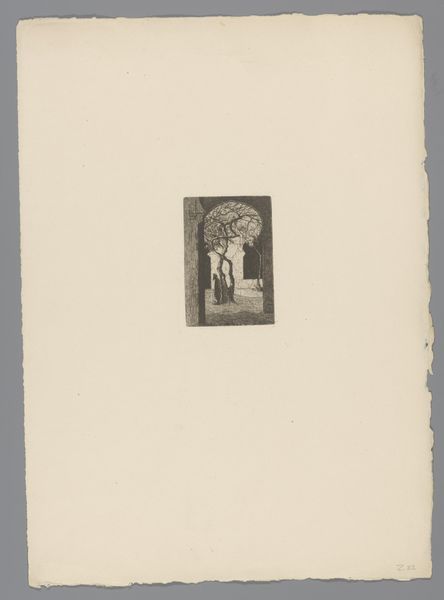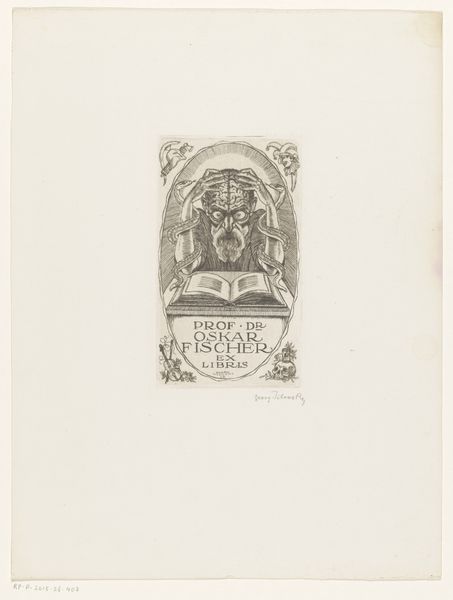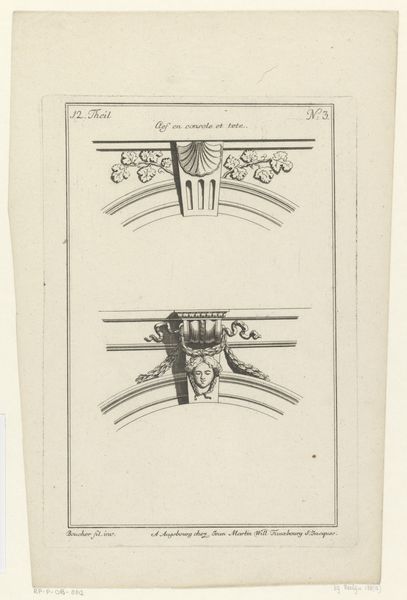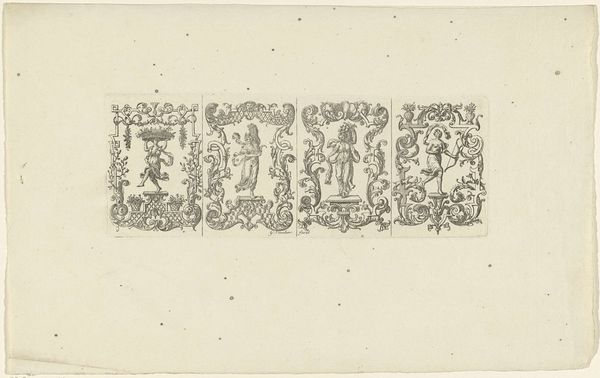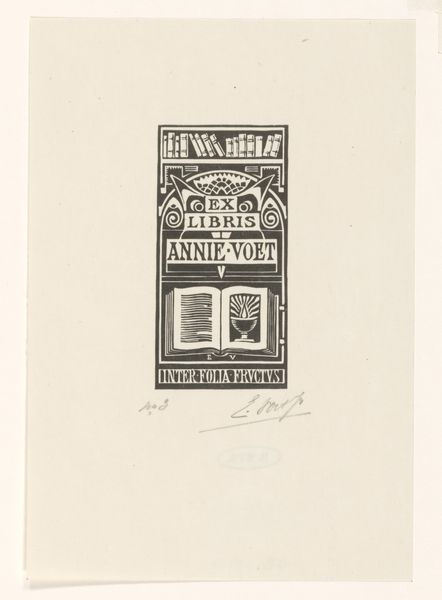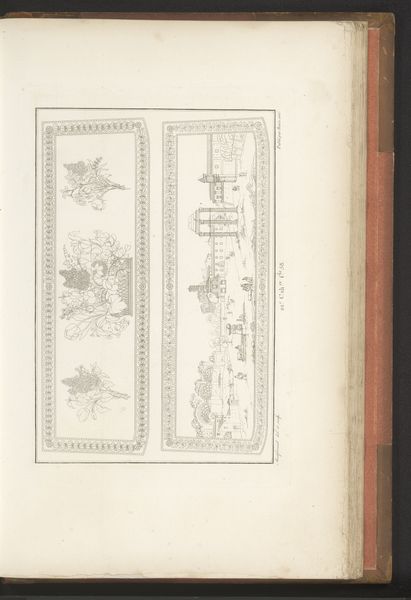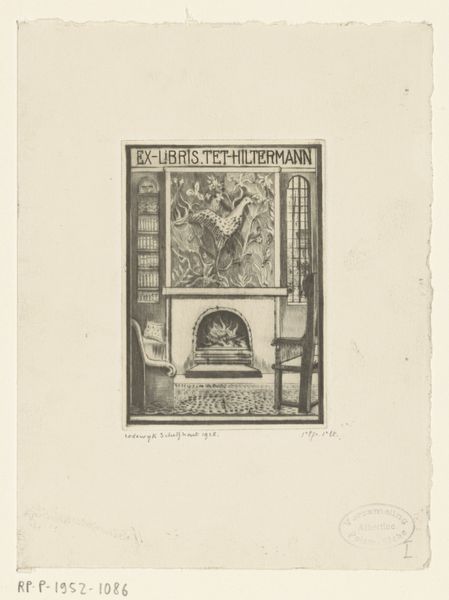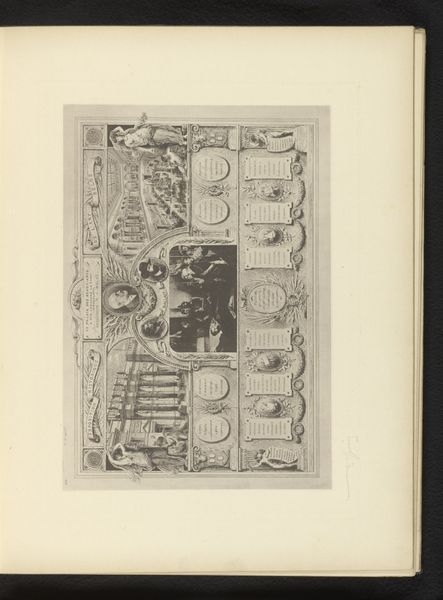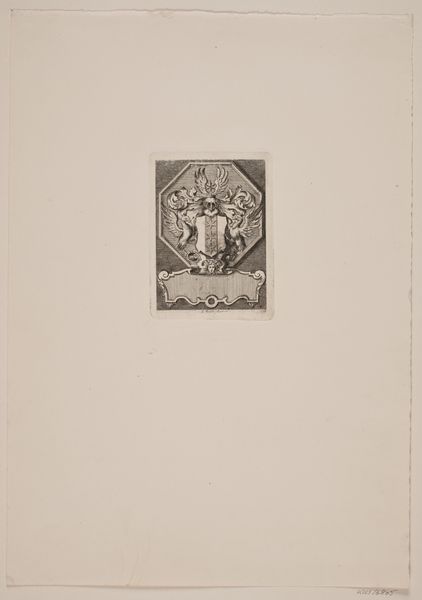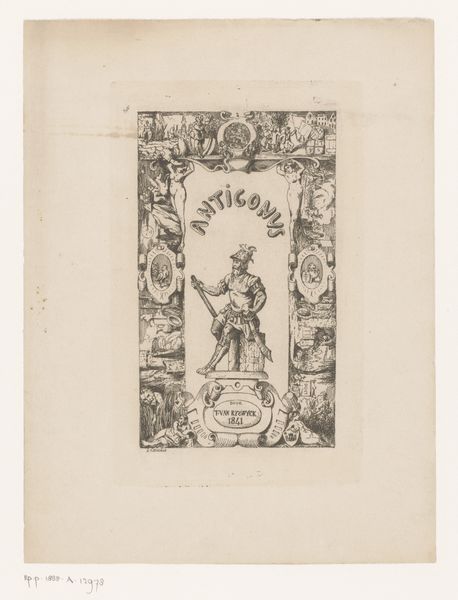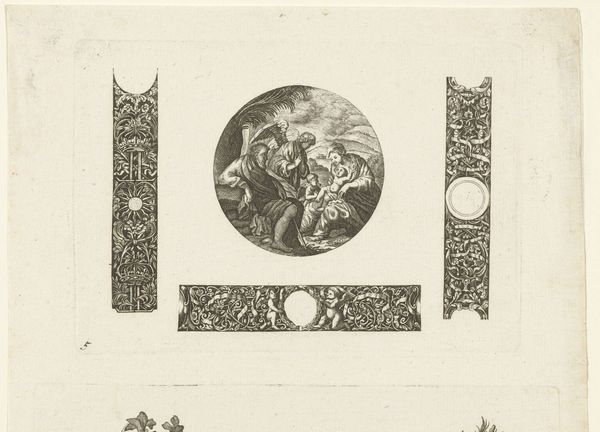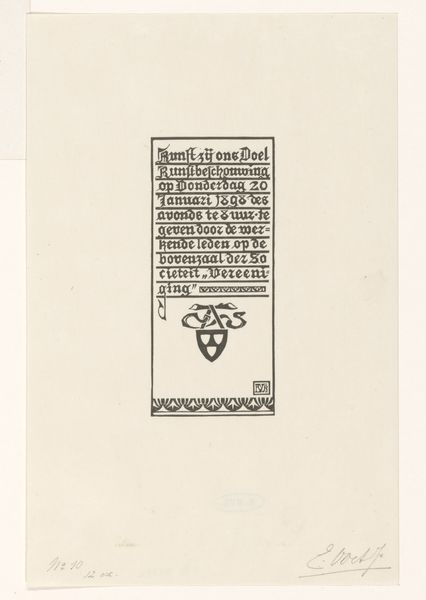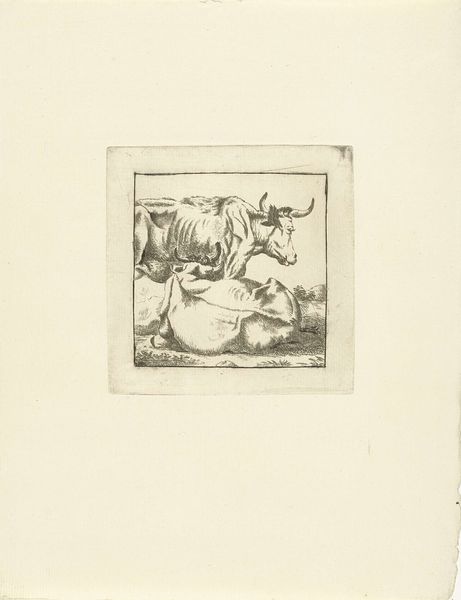
drawing, graphic-art, print, ink
#
drawing
#
graphic-art
# print
#
book
#
old engraving style
#
ink
#
pen-ink sketch
Dimensions: height 180 mm, width 130 mm
Copyright: Rijks Museum: Open Domain
Editor: We are looking at "Ex libris van Elsje Tillema", a graphic art piece made with ink in the style of a pen-ink sketch. It's an intriguing bookplate from between 1922 and 1940 by Elias Voet jr. There's this fantastical creature offering a book. What do you see in it? Curator: The figure’s ambiguous form draws my eye—is it human, animal, or something in-between? The ex libris serves as a powerful statement about knowledge and ownership during the interwar period. Voet, through this interesting figure, potentially critiques the power structures embedded within libraries and the exclusivity of access to knowledge, wouldn't you agree? Editor: I can see that. The figure does feel somewhat unsettling, especially considering the 'van Elsje Tillema' inscription. Was this Elsje maybe challenging societal expectations? Curator: Exactly! These personalized bookplates can reflect not just ownership but also the values and self-perception of the owner. What do you notice about the styling of the figure in relation to its historical context? Editor: It feels stylized, maybe inspired by earlier folk traditions. Is it making a statement about heritage? Curator: Precisely! The artist, by utilizing antiquated and mystical elements in the illustration of this woman's belonging, asks a simple yet crucial question about historical connotations in class and gender during the height of second-wave feminism. Editor: This has totally changed how I see the image. It's not just a bookplate, it's a whole conversation starter about societal issues! Curator: And that's the beauty of engaging with art in context; it reflects how artworks interact within, resist, and reshape social structures of any time period.
Comments
No comments
Be the first to comment and join the conversation on the ultimate creative platform.
